Oleander Tree Care: Taking Care of Nerium Oleander Plants & Bushes
These toxic yet pretty plants thrive in full sun and well-drained soil. Before oleanders mature you must water them once in three days and fertilize them lightly during the growing season.
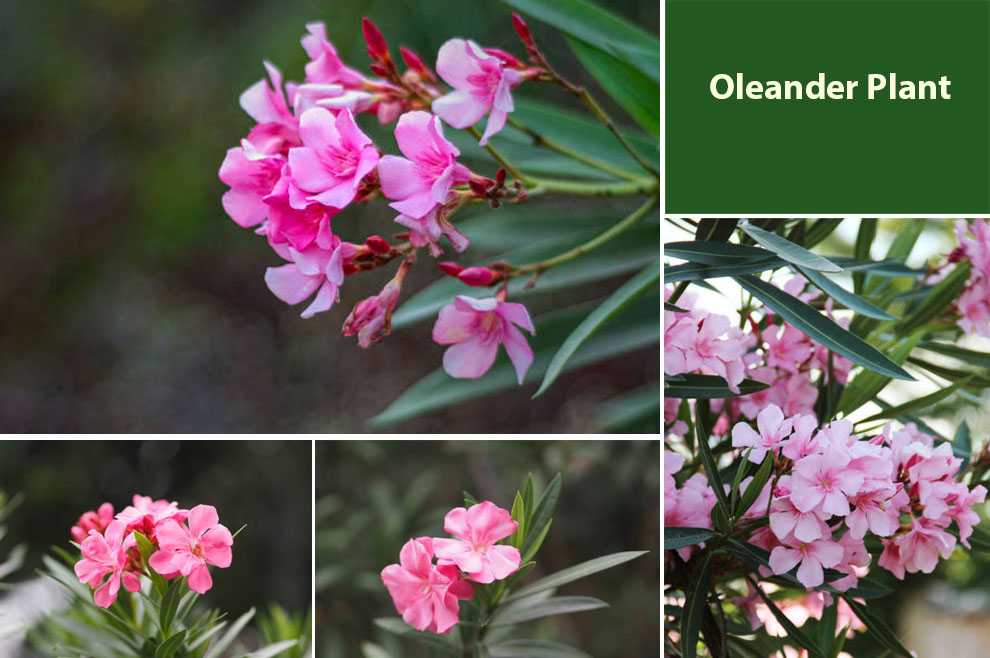
Caring for an oleander tree is pretty straightforward. The plant can tolerate various conditions, including high pH, infertile soil, severe pruning, drought, and reflected heat from walls and pavements. However, if there is one thing they cannot withstand, then it is the temperature dropping below 20 degrees.
But in colder climates, for good Oleander plant care, you can consider growing the Oleander in a container and moving it indoors when the temperature drops. Native to the Mediterranean and Southern Asia, the plant is hardy from USDA zones eight through ten.
However, keep the plant away from pets and children as the shrub can be poisonous.
Oleanders are one of the most adaptable and versatile shrubs. Botanically called the Nerium Oleander, they have dozens of uses in coastal and southern landscapes and grow naturally as round, mounded shrubs.
However, you can train it as a multi-trunked or a single-trunked tree. They have an evergreen, dense and leathery dark green foliage, which makes them an excellent privacy screen, especially if planted in borders or groups.
The plant is delicately shaped with fragrant and showy flowers that look pink, while some varieties yield yellow, orange, red, or white flowers. It blooms for an extended period, and its one-to-three-inch flowers show from spring to summer and sometimes go into early fall.
However, in the warmer regions, the blooms blossom around the year. Two prevalent nicknames for the plant are Rose Laurel and Jericho Rose.
How To Take Care Of Oleander Plant?
Oleander care starts with choosing the right plant and providing it with ideal growing conditions. When you shop for Oleander bush, look for a one or two year old one with a straight and solid central stem. Oleander plants have a moderate to fast growth rate. They have a solid multi-stem, making them a good pick for hedges or privacy screens.
You can grow them in their natural mound form or train them into a single-stemmed or multi-stemmed tree form.
For Oleander bush care chop all the other branches or any side ones on the main stem to fifty percent of their length to form a single-stemmed tree. Support it with a bamboo stake and insert the stake into the ground next to the stem and use the plant ties to secure it to the stake.
A. Where does Oleander grow best?
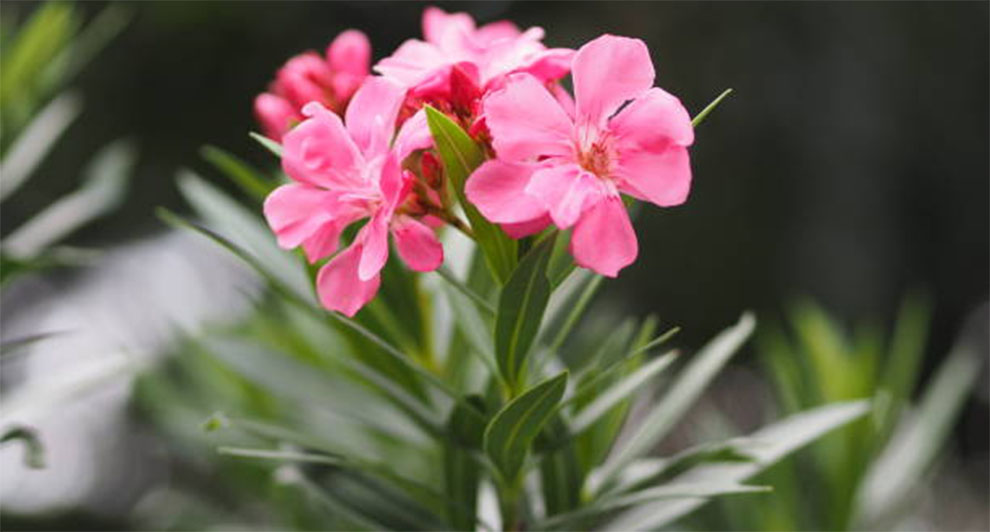
The perfect location for the oleander plant is on the southwest or south-aligned wall, where the plant is guarded against rain and wind.
Oleander is a sun plant. It does best in a spot that receives ample warmth and sun around the year. On colder nights, the heated wall can offer the necessary warmth. If you put your plant on your house’s eastern sides, it will result in the blossoms growing at a slower pace. So, for good Oleander plant care, selecting the right location is crucial.
B. How often should you water an Oleander?
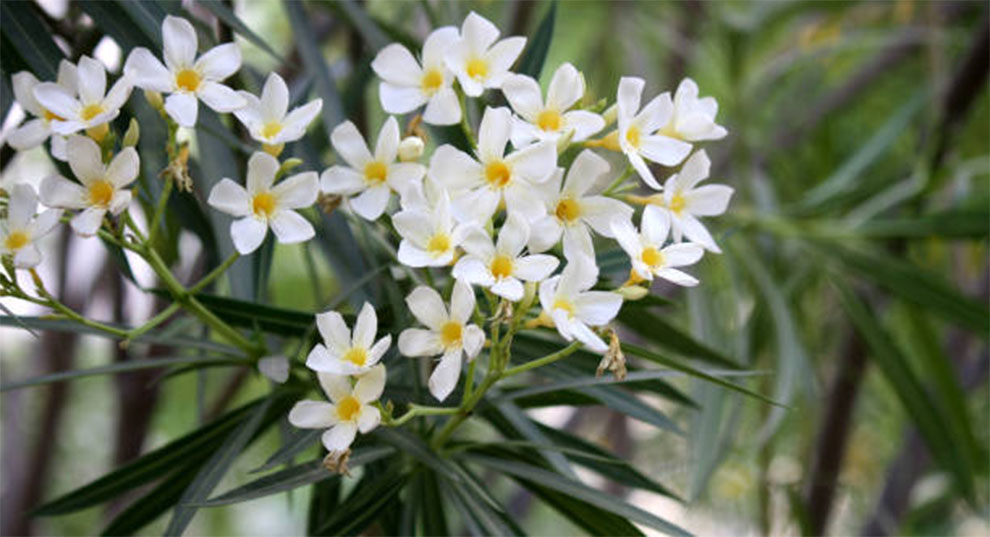
You can fix your watering schedule for oleanders to once every three days.
One of the biggest Oleander pros is that they do not need heavy maintenance. The plant is humidity-tolerant and does not need too much water.
Even though Oleander varieties are drought resistant, for proper Nerium Oleander care, you must periodically water them during the dry periods. However, if the plant’s leaves turn yellow, you must immediately cut back on the watering.
As a general rule, try to press your finger into the soil. You should water the plant if it feels dry and does not stick in.
After Oleander establishes, you can be laid back on the Oleander plant care. They can withstand lesser water. If the plant starts dropping foliage, fret not, as with proper irrigation, they can bounce back again.
Deep soak the root ball for watering and install emitters approximately 1 ½ feet from the trunk. Set the hose on a slow trickle to saturate the root ball thoroughly. Do not over-water, as it can leave standing water.
During the dry weather, watering additional one to two inches per week suffices to boost growth and trigger flowering.
C. Do Oleanders need full sun?
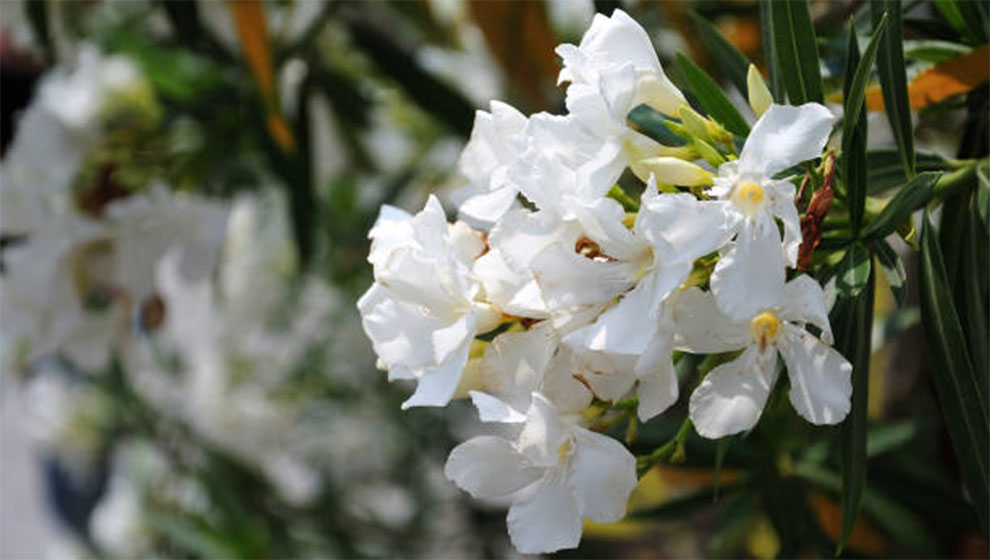
Yes, Oleanders love the sun.
Oleander tree care requires sunny climates. It can tolerate a partially-shaded environment. If planting outdoors, consider a partially-shaded or sunny location. Indoor plants should be kept in a shaded spot.
When you have to move the plant outdoors or in an area with more sunlight, it should be allowed to gradually adapt to the light increase to ensure that the sun does not burn the leaves.
D. What is the ideal soil for Oleanders?
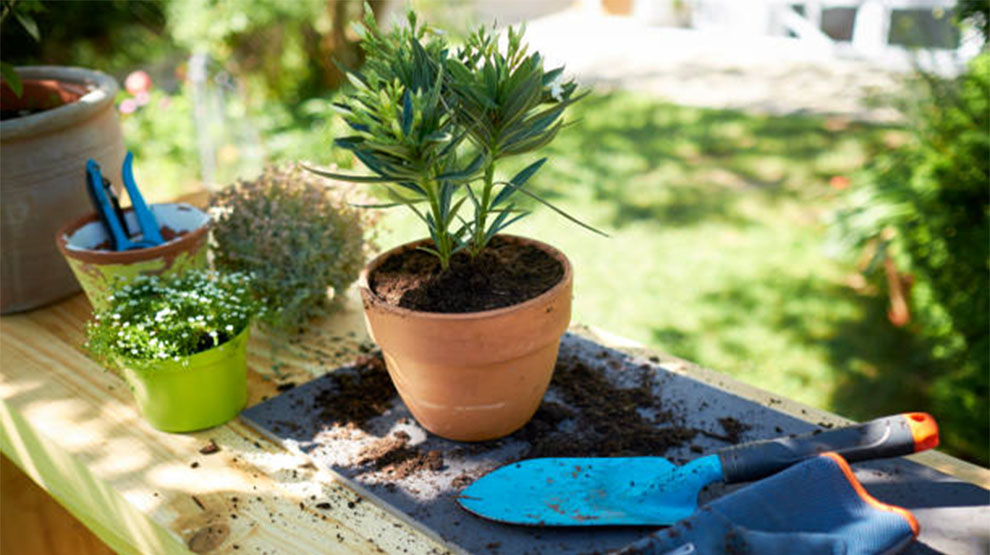
Fertile soil with alkaline pH works the best.
Oleanders are adaptive plants. They can grow in almost all kinds of soil, but it helps to give them the best start by providing them access to the ideal soil medium. It will help develop a healthy root system.
In their native habitats – India, the Middle East, subtropical Asia, and the Mediterranean, Oleanders love the sandy soil where there is ample groundwater or flooding followed by draining.
When planting in a container, add a good potting mix comprising 1 part perlite, 1 part sand, and 4 parts potting soil.
E. Temperature & humidity requirements for Oleander
It can survive temperatures up to 20°F.
As stated, the Oleander plant care is pretty straightforward. The plant can tolerate light frost and survive temperature dropping to 20 degrees Fahrenheit. However, if the temperature goes below that, you must grow it in a container and bring your plant indoors.
F. Fertilizing Oleander
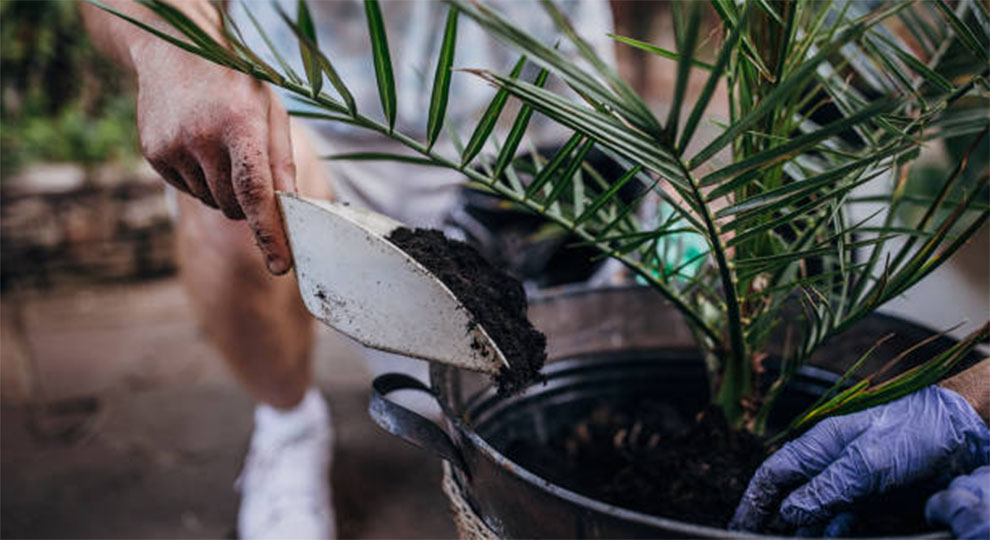
Fertilize during the first spring and then lightly every year after.
Oleander requires ample fertilizer, especially during the growth period. So, for Oleander bush care, you must frequently fertilize it with a small dosage every time. Reach out for a balanced fertilizer that does not have a high nitrogen level to avoid spindling.
Excessive fertilizer in the barren soil might result in fewer flowers and cause malnutrition. Always follow the principle of dilute, light, less, and frequent.
As part of the Nerium Oleander care, you must fertilize once every fortnight during spring as it grows more rapidly. In addition, summer fertilizing also helps because it is when the plant is blooming.
Use an organic fertilizer. It can help with winter hardiness and growth. When picking a fertilizer, keep away from alkaline fertilizers. The nitrogen fertilizer is ideal during the plant’s vegetative growth during spring.
You can replace it with potassium and phosphate-based fertilizer in the propagation period, that is, fall and spring.
As part of the Oleander tree care, you must add some manure into the soil when fertilizing, ensuring that the organic fertilizer is approximately twenty percent.
G. When should Oleanders be cut back?
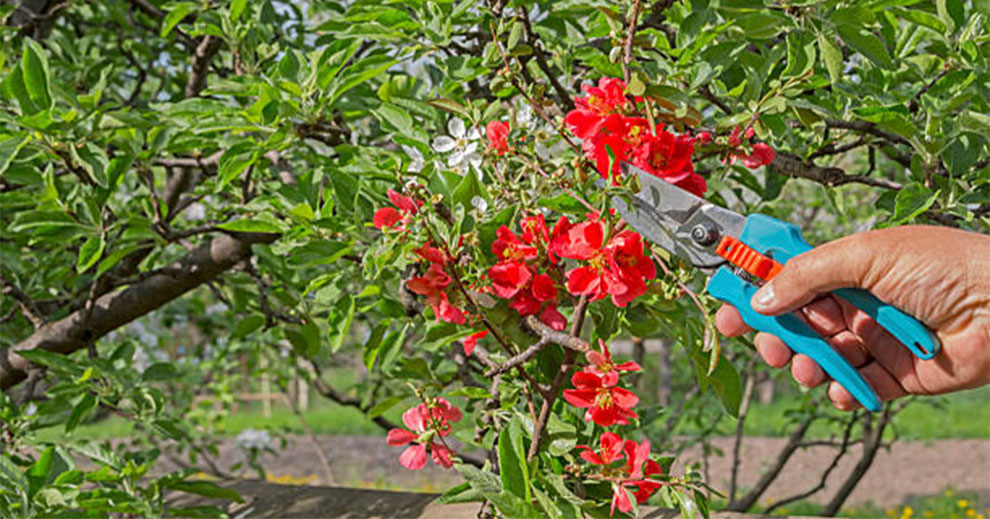
The best time to prune the Oleanders is from September into early October.
Pruning can help you with a healthy and solid plant with abundant blooms. While pruning, ensure that you cut back slightly above the leaf nodes. It is where three leaves will pop out from the branch. When you cut it here, you trigger new branching at every leaf joint or node.
When you allow these new branches to grow and follow it with pruning at the leaf nodes, you again trigger fresh branching at these points. It is quintessential for Oleander bush care and helps amplify the branch growth threefold, leaving you with bushy and round plants.
Always remember that the location of the first pruning must be low on the plant to enable a good base structure for future pruning.
At every new branch tip, you will get a flower cluster developing. Hence, by having more branches, you will automatically have more flowers. Pruning is vital when taking care of Oleander plants because it helps give the plant a visual appeal and proper shape. It triggers more branching, leaving you with more flower clusters.
You can prune from September into early October. If you prune later than this, you may chop off the spring growth, which is not ideal.
Fortunately, Oleanders are robust and can withstand a substantial degree of pruning. So, even if you get carried away, it will not kill your plant. So, do not be afraid to cut back to whatever base height you desire.
H. How do you keep Oleanders over the winter?
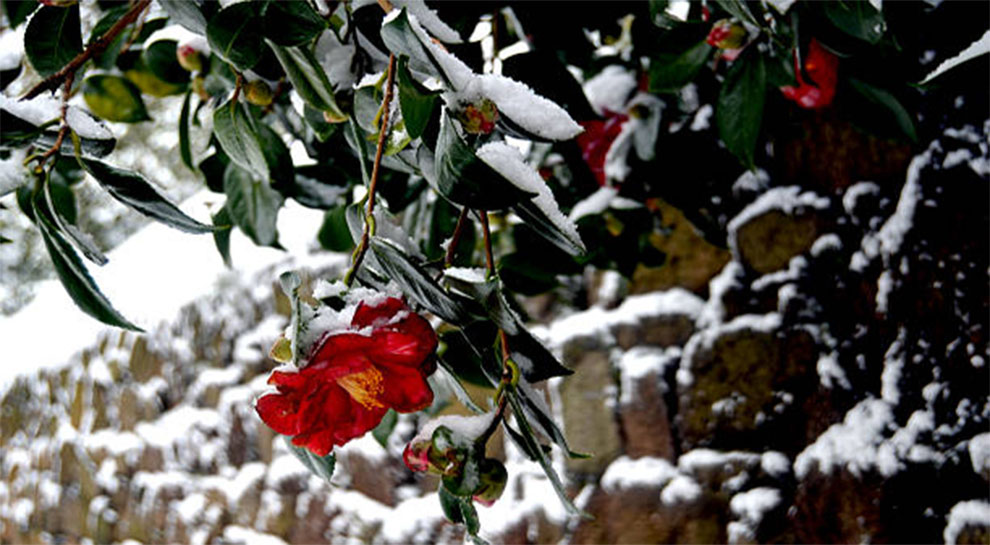
The plant can withstand cold temperatures up to 20°F.
Oleanders are hardy in USDA hardiness zones nine through 10. But, you must bring changes in the Oleander tree care with changing seasons. In the late fall, the plant does not need fertilizing. So, allow the plant to rest over the winter. You can start fertilizing again during the spring.
Overwintering oleander is important but please know that these plants don’t need much special care in the winter season. If you grow small Oleanders in containers outdoors, you can just move them indoors in winter.
You can spray them with neem oil. It helps guard the plant against pests entering indoors and attacking the other houseplants. If you take your plant outdoors, you should only let it stay there for a couple of during the day to ensure the plant does not suddenly experience a temperature shock.
Oleander Care In Pots
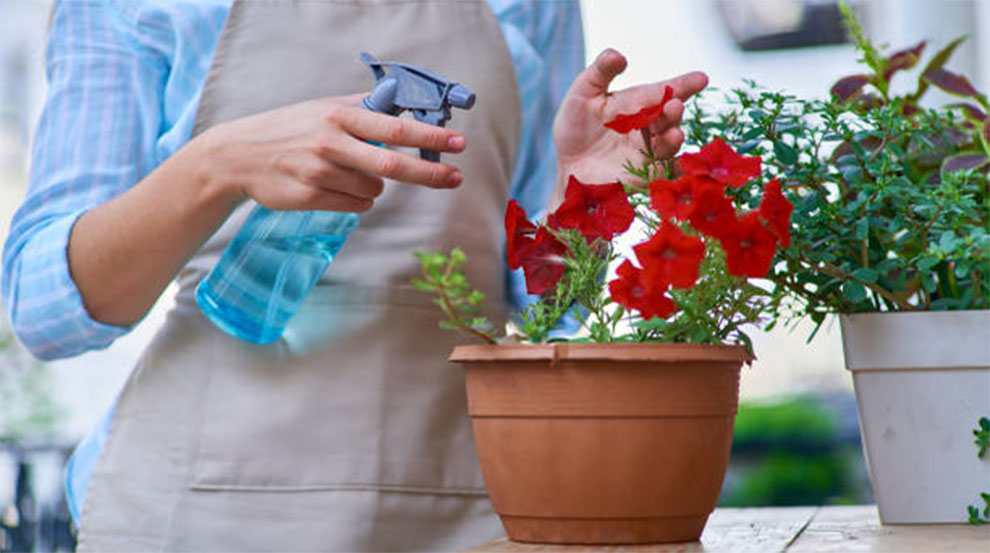
It is easy to grow Oleander in garden boxes and pots, especially in areas where it freezes during the winter. Like ground planting, you must pick a spot that is guarded against the wind but adequately exposed to the sun. Here are other guidelines necessary for Oleander tree care in a pot:
- Set the shrub in the soil mix to help the roots develop well.
- Soil mix allows water retention for as long as possible and caters to the plant’s needs for the required organic matter to boost its growth.
- You can mulch the base in summer to ensure the roots are adequately moist.
- Move the plant indoors during the winters in a light-batched place that is cool but does not freeze.
- You can add a tomato fertilizer into the soil to boost flower production.
Oleander Problems and Their Solutions
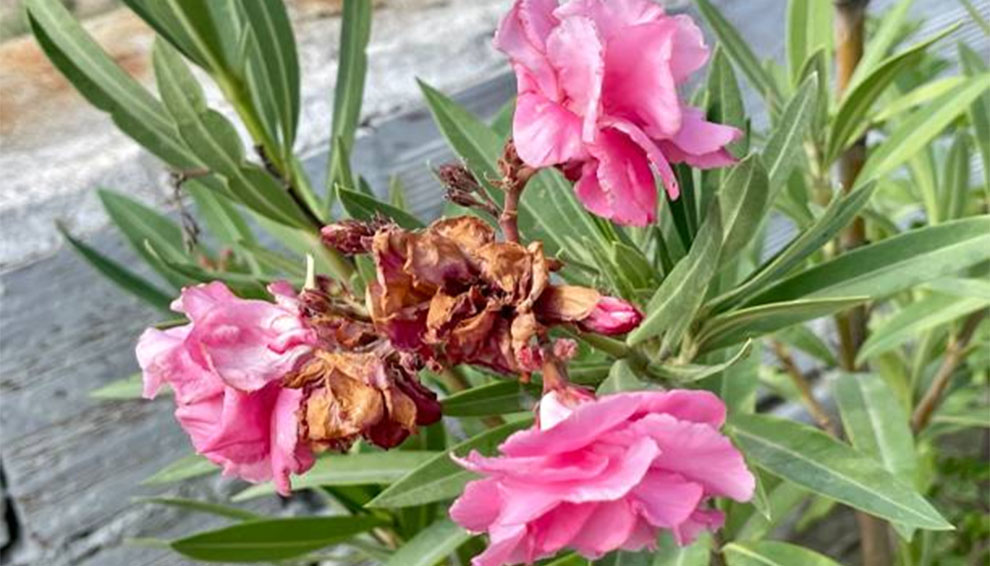
Several pests and diseases can affect the flowers and foliage of the Oleander. Hence, it is essential to routinely examine the plant to check for any plausible signs of damage. Some of the prevalent diseases and pests that attack the flowers and foliage of the Oleander are discussed below:
1. Cercospora Blight
It is a disease that affects the leaf margins and the apex of the Oleander. In the beginning, you will see reddish-purple spots on the leaves. Over time, the spots expand and show as semi-circular, round, and irregular patches.
The control and prevention measure involves removing any diseased leaves as and when you notice them. It helps prevent the disease from spreading. Alternatively, you can also use a pesticide to combat spreading.
2. Black Spot
It affects the plant’s leaves. At times, the disease spots join and develop a corrugated type. You can find it on the leaf’s underside and the front. The top end will look darker than the underside, and the spots will be grayish brown or grayish white in color. In the later stage, it will form a black powdery mold layer, which usually occurs on overwintering leaves.
So, if you spot this, you must instantly spray a fungicide to prevent the spread.
3. Aphids
They gather together onto the Oleander’s leaves and the tender branches, resulting in non-blooming or abnormal blooming.
For Nerium Oleander care, you must sprinkle homemade garlic spray or insecticide onto the plant.
4. Witch’s Broom
It primarily affects the branches. The diseased branches will look pale red and swell at the base.
The ideal control and prevention measures involve cutting and eliminating the diseased branches in time and using tetracycline or other antibiotics at an early stage. It helps avoid spreading.
Buying Oleander – Some Tips To Remember
- Oleanders are toxic to pets and humans. So, before buying, please remember that.
- When picking the Oleanders, carefully examine them to ensure there are no signs of damage and pests.
- You can find a variety of Oleanders in nurseries and garden centers, but specialist nurseries will have a vaster choice.
- Always pick an upright plant that shows no signs of unhealthy growth like droopy leaves or discoloration.
Oleander Tree Information and Facts
Ques 1. How do you keep Oleanders blooming?
Ans. To ensure the best bloom, you must keep in mind the right steps for Oleander tree care:
- Plant them in full sun.
- Fertilize with a slow-release feed in early spring.
- Water sparingly once established.
- Lastly, please give it a hard spray with a garden hose to avoid damage from mealybugs and scale.
Ques 2. How to make Oleanders grow faster?
Ans. Even though an established Oleander demands little to no fertilizing, feeding the young plant can help it grow faster. You must fertilize the plant in early spring when new growth first shows. Again fertilize it during the fall to ensure the plant stores ample nutrients for the next growing season.
Ques 3. What to do if my Oleander not flowering?
Ans. If your Oleanders do not bloom, assess if it is getting ample light and water. Next, cut back any weeds or overhanging trees around the base. Prune the plant back by ½ inch to trigger new growth. The flowers appear on the new branches. So, chopping can help.
Further, thin the plant by removing crowded and dead branches. Ideally, prune once during the fall for proper Oleander plant care. Also, please wear protective gear while pruning because the plant is poisonous. Once done, wash your hands and the tools instantly. Never burn the chopped Oleander. As the smoke from it is highly toxic.
Alternatively, you can give your non-blooming Oleander a dose of bloom-booster fertilizer. Opt for 0-52-30 or a 10-30-20 mix fertilizer that is lower in nitrogen and higher in potassium and phosphorus to trigger flower development.
You must not use the bloom-boosting feed repeatedly and back it with a well-balanced 14-14-14 or 10-10-10 fertilizer in fall and spring.
